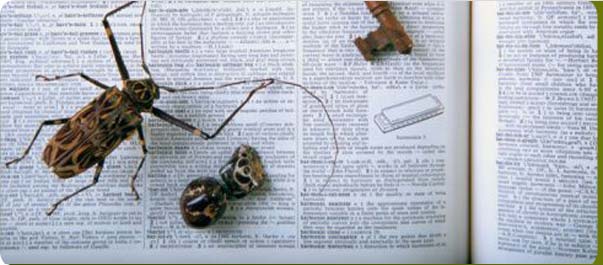Common household pests
Cockroaches/Mosquitoes (Blatella Germanica/Orientallis, Americana Periplaneta and Anopheles spp)
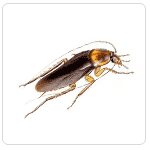 Treatment of cockroaches involves the use of a hand/held-operated sprayer popularly known as “Ares”. With it a light steady jet spray is applied on the inner perimeter of the building i.e. where the wall meets the floor.
Treatment of cockroaches involves the use of a hand/held-operated sprayer popularly known as “Ares”. With it a light steady jet spray is applied on the inner perimeter of the building i.e. where the wall meets the floor.
In places such as drawers, cupboards and cabinets a crack and crevice treatment is applied using a long plastic nozzle attached to the”Ares”. The plastic nozzle enables the pesticide to thoroughly sink into the cracks and crevices, which are ideal breeding places for cockroaches.
In highly infested areas like kitchens, pantries, stores and dinning rooms, a follow-up of the same exercise is arranged two weeks after the initial operation. This is meant to completely eradicate the roach eggs that normally hatch after two weeks.
In addition, manholes and pit latrines are sprayed with the help of a motorised petrol driven rig where by pesticides are injected at high pressure into the manholes and latrines that provide perfect breeding places. These sprays have a residual effect i.e. they remain active long after the extermination exercise has been done.
 The treatment of mosquitoes involves the use of the above hand-held sprayer known as “Ares”. With it a fine mist spray is applied on the walls and ceilings of the inside of the building. The pesticide is stainless, odourless, and has a residual effect. The idea is for the mosquitoes to land on the walls and ceilings and on contact with the pesticide eventually die.
The treatment of mosquitoes involves the use of the above hand-held sprayer known as “Ares”. With it a fine mist spray is applied on the walls and ceilings of the inside of the building. The pesticide is stainless, odourless, and has a residual effect. The idea is for the mosquitoes to land on the walls and ceilings and on contact with the pesticide eventually die.
Ants/Termites (Lasius Niger and Monomorium Pharaonis, Isoptera spp)
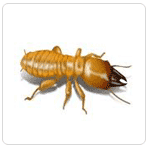 The treatment of “crazy” ants and termites is very similar to the crack and crevice treatment of cockroaches. The cracks in the walls of the buildings provide ideal nesting sites for the ants. Using the “Ares” a fine jet spray is injected into the cracks after which the customer is strongly advised to seal them to avoid future re-infestation. Spraying pesticides with the help of a high-powered motorised rig treats ants in the compound. With the rig, an environmentally friendly pesticide is sprayed in form of a fine mist onto the affected areas (i.e. amongst the plants and shrubs).
The treatment of “crazy” ants and termites is very similar to the crack and crevice treatment of cockroaches. The cracks in the walls of the buildings provide ideal nesting sites for the ants. Using the “Ares” a fine jet spray is injected into the cracks after which the customer is strongly advised to seal them to avoid future re-infestation. Spraying pesticides with the help of a high-powered motorised rig treats ants in the compound. With the rig, an environmentally friendly pesticide is sprayed in form of a fine mist onto the affected areas (i.e. amongst the plants and shrubs).
Pre-construction termite treatment is done by applying a termiticide with a high-powered motorised rig in a fine steady mist form, to a point of run off in between the foundation of the building i.e. after the soil has been compacted. The termiticide has a residual effect i.e. remains active for years after completion of the exercise.
Rodents (Mus domesticus, Rattus Norvegicus and Rattus rattus)
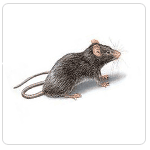 The control and extermination of rodents involves the use of weather blocks or pellets which are placed on special trays in strategic places, mainly entry and exit points into a building or room. The weather blocks or pellets have a scent that is attractive to the rodents, and is very lethal and therefore applied in single doses. It does not kill on the spot to allow the entire rodent family feed on the bait. The rodents tend to die after 3 or 4 days outside the premises due to the anticoagulant effect of the bait.
The control and extermination of rodents involves the use of weather blocks or pellets which are placed on special trays in strategic places, mainly entry and exit points into a building or room. The weather blocks or pellets have a scent that is attractive to the rodents, and is very lethal and therefore applied in single doses. It does not kill on the spot to allow the entire rodent family feed on the bait. The rodents tend to die after 3 or 4 days outside the premises due to the anticoagulant effect of the bait.
Safety Precautions:
-- Avoid all contact by mouth. Wash hands and skin thoroughly after work. Use gloves for handling in order to avoid bait shyness.
-- Burn or bury all rodent bodies and uneaten baits. In case of poisoning look for medical advice.
Antidote:
-- KI (must be administered under medical supervision).
Bats (Pteropodidae spp)
 The control of bats involves physically wetting/spraying the attic of the premises with a residual pesticide between the tiles and the polythene sheet. The pesticide on contact eventually kills the bats and also has a residual effect, which repels them. We strongly advise the tenant to seal off all entry points.
The control of bats involves physically wetting/spraying the attic of the premises with a residual pesticide between the tiles and the polythene sheet. The pesticide on contact eventually kills the bats and also has a residual effect, which repels them. We strongly advise the tenant to seal off all entry points.
Snakes (Order Squamata)
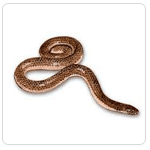 The control of snakes involves the use of repellents in the form of blocks/pellets, which are placed strategically around the perimeter of the compound and house. The repellents emit a strong scent, which repel the snakes away from the premises.
The control of snakes involves the use of repellents in the form of blocks/pellets, which are placed strategically around the perimeter of the compound and house. The repellents emit a strong scent, which repel the snakes away from the premises.
Snails (Class Mollusca)
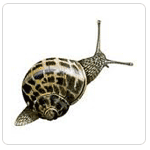 Snails and slugs are mainly active at night particularly when conditions are warm and damp. We scatter bait pellets on the soil in and around beds with young succulent growth where snails occur. We also scatter pellets under and near hiding places such as dense growing plants, plants with large leaves, rockeries and stonewalls.
Snails and slugs are mainly active at night particularly when conditions are warm and damp. We scatter bait pellets on the soil in and around beds with young succulent growth where snails occur. We also scatter pellets under and near hiding places such as dense growing plants, plants with large leaves, rockeries and stonewalls.
The pellets are firm, do not disintegrate rapidly and stay effective for a reasonable period. The safety precautions undertaken in the control of rodents above apply.








